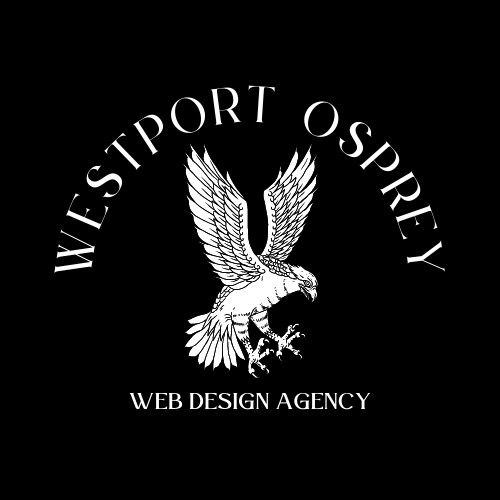How to Write a High-Converting About Page
Most website visitors head to your About page to answer one question: Can I trust this business?
The About page is where people decide if your business is worth their time. It gives readers a quick sense of your values, who you are, and whether you feel relatable. If the page feels stiff or vague, they may move on before seeing your offer.
In this guide, we’ll walk through practical About page tips that help build trust, show your value, and guide readers toward action.
We’ll cover structure, writing choices, visuals, and what to avoid.
Want your website to keep people around longer? Let’s get into it.
Small Tweaks That Instantly Improve Your About Page
Your About page doesn’t have to be long or elaborate. It just needs to feel clear and helpful. Most people skim this page quickly, trying to decide if they relate to you or your business. With a few small changes, you can make that decision easier for them.

- Start with your headline. If it says “About Us,” consider changing it to something that reflects your message or your values. A line like “Why we care about helping [your audience]” or “Who we are and how we help” gives readers a reason to stay. It sets the right tone for everything that follows.
- Next, take a look at the main image. A real photo of you or your team helps build trust immediately. Website copy feels more believable when readers can picture the person behind it. So, choose a photo that feels natural and warm. It doesn’t need to be professionally staged, but it should feel like you.
- Now look at your writing. If your copy feels stiff or overly formal, rewrite it so it sounds like something you’d say to a potential customer. Website copywriting works best when it’s straightforward and clear. The goal is to show people what you do, why it matters, and how you can help them.
- Break your content into short sections to make it easier to scan. Use bullet points where it makes sense, especially when listing your services, values, or reasons people choose you. Readers will stick around longer when your layout feels simple to follow.
- Before you finish, add a soft call to action. A sentence like “Let’s talk” or “See how we can work together” can point readers in the right direction. It keeps the conversation going without pushing too hard.
Pro Tip: When you’re done, read your copy out loud. If it doesn’t sound like you, keep going until it does. That’s the easiest way to write copy that feels compelling and honest.
Build a Brand Voice That Feels Like a Real Person
If your About page sounds like it could’ve been written for any brand, it’s time to revisit the voice behind your words. This section helps you create a tone that feels like you: friendly, familiar, and consistent with how you actually work with people.
A strong brand voice helps build a connection quickly, especially when your reader is scanning fast. Let’s know how.
Sounds like a human
Start by using the kind of language you’d use in a conversation. Picture someone asking what you do at a market or over coffee. If your written explanation sounds more formal or stiff than how you’d say it out loud, rewrite it.
From our experience helping small businesses rewrite their About pages, we’ve seen that readers stay longer when the tone feels genuine. That’s the power of a clear personal brand.
Show who you are visually
Your brand identity includes more than your logo or colours. It shows up in your photos, the spacing on your page, and how comfortable your layout feels.
Instead of stock images or stiff portraits, try adding a real, relaxed photo of yourself or your workspace. A familiar setting helps reinforce your core values and sets the tone for the rest of the page.
Share a quick story
A short founder story helps people understand your intent. For example: “This started when I was trying to help a friend fix their outdated website, and realized most people didn’t know where to begin.”
Add a couple of personal details like that. It helps readers imagine the moment and builds a connection that facts alone can’t deliver.

Share Your Story Without Sounding Like a Job Application
Many About pages fall into one of two traps. Either they’re too polished and vague, or they read like a job application filled with titles and timelines. The goal here is to help readers see what makes your business feel human. A simple brand story builds connection and adds clarity to your company values.
Here’s a structure we’ve seen work again and again:
| What to include | Why it helps | Quick example |
| When you started | Gives background and timing | “We opened in 2017 with two laptops and no budget.” |
| What problem did you notice | Shows you understand the audience | “We kept hearing people say they didn’t know who to trust.” |
| What you offer today | Connects your journey to what you do now | “We help small businesses write website copy that feels honest.” |
| What you believe in | Adds value and vision | “We believe simple, clear writing builds stronger brands.” |
This structure creates a smoother reading experience while still giving readers a deeper understanding of what you do and why. Based on our observations, the best stories are short and specific. A few clear details go further than broad claims or lists of achievements.
Research from Harris Interactive shows that 79% of people make a special effort to buy from brands aligned with their personal values, and 71% believe it’s important that brands support gender equality.
That’s why even a short brand story rooted in values can support brand credibility and help readers feel more connected from the start.
You don’t need to write a full essay. Think of it like the first few lines of a blog post. Offer enough context to help someone feel like they’ve just met you.
Writing a Mission Statement People Actually Remember
Most mission statements sound like they were written for a pitch deck. It needs to be clear. But too often, companies use this space to sound impressive instead of helpful. Generic phrases like “We aim to innovate solutions for modern challenges” don’t say much, and they don’t stick.
Your mission should explain who you help, what you do, and why that matters. It’s a chance to connect with people, not just describe your business. When someone reads it, they should immediately understand what kind of company you run and what your priorities are.
Here’s a format that works well:
We help [audience] do [specific thing], so they can [benefit or outcome].
It’s a simple line, but it keeps your message focused on the reader instead of your own goals.
For example:
We help small business owners write website copy that earns trust and leads to more work.
That one sentence covers what you do, who it’s for, and why it matters.
Our team discovered that the best mission statements are written in plain language. They avoid jargon. They reflect real brand values. And they make it easy for readers to decide if your idea of success matches theirs.

You don’t need to sell yourself here. You just need to tell the truth in a way that’s easy to remember.
What Do You Want People to Do Next?
When someone reaches the end of your About page, there’s a good chance they’ve learned what you do and why it matters. But without a clear next step, they might close the tab and forget they were ever there.
That’s why every About page should include a gentle call to action. It gives your reader a direction to keep going.
Here’s a quick comparison of common CTA styles and how they land with potential customers:
- “Let’s talk”
Pros: Feels personal and easygoing
Cons: Lacks urgency or a clear next move - “Start your project”
Pros: Focused and actionable
Cons: Might feel too strong for early-stage visitors - “See how we work”
Pros: Helps readers explore before committing
Cons: May not convert as well if the CTA is buried low on the page
There’s no perfect call to action for every business. The right one depends on your voice, offer, and audience. If your website speaks casually, keep your CTA friendly. If you’re selling a high-converting service, try language that shows confidence without pressure.
A good CTA keeps the conversation going. It turns a passive reader into someone curious enough to click further. That’s what moves customers through the rest of your pages.
Show Proof People Can Trust
People trust what they can see. Your About page should include simple signals that prove your business is real and reliable. These elements work quietly in the background to help readers feel more confident as they move through your website.
Here’s what to include:
- Short testimonials
Use direct quotes from happy customers or clients. Even one or two lines can act as powerful social proof. Make sure they’re real and feel natural. - Recognizable logos
If your brand has worked with media outlets, clients, or partners, show those badges. It helps website visitors recognize your place in the market without needing a long explanation. - Relevant credentials or associations
Whether it’s a license, a membership, or an award, listing it shows commitment to your field. These details build credibility, especially for readers who are new to your business. - Real contact information
A phone number, city, or even a link to your Google Business profile makes it easier for people to feel they can reach you. This alone can build trust with cautious visitors.
These aren’t fancy features. They’re small, reliable cues that your business does what it says it does. When your readers feel that, they’re more likely to stick around and take action.
Solo or Team? Here’s How to Show It Right
Your About page should reflect the way your business is structured. A small business owner working solo has a different voice and visual rhythm than a team or co-founder setup.
Here’s how to adjust the message so it fits what’s real.
1. Voice and writing style
Solo founders should write in the first person. Phrases like “I started this business to help…” make the content feel more personal. In a co-founder or team setup, “we” feels more natural and consistent. Readers can tell when a brand speaks with one voice, so keep it consistent across your website.
2. Photos and presentation
Solo professionals should include one clear photo. Choose something that feels confident and approachable, not stiff. If you have a team, include a group photo or individual pictures with first names and job titles. This helps visitors quickly understand the people behind the business.
3. Story and values
If you’re solo, tell a short founder story that explains how the business started and why it matters to you. A sentence or two of personal details adds depth. For a team, share how the group came together and what you value as a unit. This is a good place to reinforce your brand’s purpose.
4. Call to action tone
Solo example: “Work with me” or “Let’s connect.”
Team example: “Meet the team” or “See how we work.”
Small updates like these help your About page stay honest and aligned with who you really are.
Use Parts of Your About Page on Landing Pages Too
Not everyone clicks through to your About page, especially if they land on a service or sales page first. That’s why it helps to reuse parts of your About content across different landing pages. Even a single line that explains who you are or why you care can help visitors feel more at ease.

Adding these elements doesn’t take much space, but they can improve how trustworthy your offer feels. It’s a subtle form of marketing that supports the story behind your product or service.
Example 1: Add a short intro above or near your call to action
A one-liner like, “We’re a small team helping local businesses get better results from their websites,” gives quick context and builds trust. It shows that there’s a real person or brand behind the page, without asking the visitor to dig deeper.
Example 2: Use a customer quote or a first-person note near the pricing section
Try adding a quick note like, “After building our own page from scratch, we realized how many small businesses struggle with clear website copy.” It’s a personal comment that feels human and experienced, not scripted.
When someone visits a landing page, they’re usually deciding quickly. A short, honest detail can give them enough confidence to keep reading or click. These moments are small, but they help your message stick.
Don’t Let Your About Page Go Stale
Your About page isn’t something you write once and forget. As your business grows, the page should grow with it. Outdated photos, old timelines, or missing details can weaken your message and cost you trust.
Set a reminder to review it every few months. Double check that it still sounds like you, reflects your values, and makes sense for where your business is right now. Even small updates, like adding a recent win or changing how you write your team intro, can improve the final product.
Your About page supports more than your brand. When it’s current and confident, it plays a real role in building trust and getting more sales.
For more blog posts like this, visit Westport Osprey and keep learning how to shape a better website.




